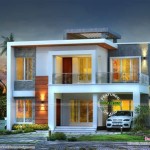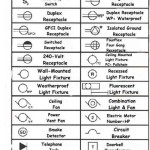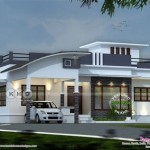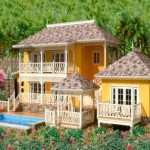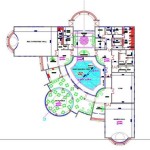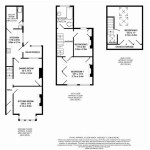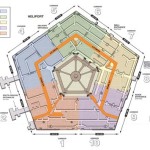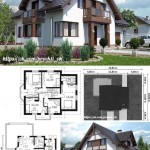Horse Barn Floor Plans With Living Quarters: Combining Functionality and Comfort
Horse barn floor plans incorporating living quarters present a compelling solution for individuals seeking to integrate their equestrian passions with their residential needs. These designs effectively blend animal care facilities with comfortable living spaces, offering convenience, security, and a unique lifestyle. Careful planning and consideration of various factors are paramount to achieving a functional and aesthetically pleasing structure. This article will explore key aspects of designing horse barn floor plans with living quarters, highlighting design considerations, structural elements, and the integration of animal well-being with human comfort.
Key Considerations in Designing Horse Barn Floor Plans with Living Quarters
Successfully integrating living quarters into a horse barn requires a comprehensive understanding of several key considerations. These considerations extend beyond the simple placement of walls and doors, encompassing zoning regulations, structural integrity, and the specific needs of both the horses and the human occupants. Neglecting these aspects can lead to functional inefficiencies, structural problems, and potential health hazards.
Zoning and Building Codes: Before embarking on any design work, researching local zoning regulations and building codes is crucial. These regulations often dictate permissible land use, building setbacks, height restrictions, and requirements for agricultural structures. Furthermore, specific codes may apply to structures combining living quarters with animal housing, addressing issues such as ventilation, waste management, and fire safety. Failure to comply with these regulations can result in costly delays, fines, or even the need to dismantle the construction. Engaging with local planning authorities early in the process is highly recommended to ensure compliance and avoid potential pitfalls.
Separation of Living and Animal Areas: Maintaining a clear separation between the living quarters and the horse barn is essential for several reasons. Firstly, it minimizes the transmission of odors, dust, and allergens from the barn to the living space, creating a healthier and more comfortable environment for the residents. Secondly, it helps regulate noise levels, preventing disturbances from the horses' movements and activities. Thirdly, it reduces the risk of contamination between the two areas, safeguarding the health of both the horses and the humans. A well-designed floor plan will incorporate features like airtight doors, separate ventilation systems, and strategically placed buffer zones to achieve effective separation.
Waste Management and Drainage: Efficient waste management is paramount in any horse barn, and it becomes even more critical when living quarters are integrated. Manure and wastewater must be effectively collected, stored, and disposed of to prevent environmental contamination and maintain sanitary conditions. The floor plan should incorporate well-designed drainage systems that direct runoff away from both the barn and the living area. Appropriately sized manure storage facilities, compliant with local regulations, are also essential. Furthermore, considering composting options or other sustainable waste management practices can contribute to a more environmentally responsible design.
Structural Elements and Materials for Horse Barns with Living Quarters
The structural integrity of a horse barn with living quarters is of utmost importance, ensuring the safety and durability of the entire structure. Choosing appropriate materials and construction techniques is critical for withstanding the weight of the building, the stresses imposed by the horses, and the effects of weather conditions. Furthermore, the choice of materials can significantly impact the aesthetics and overall cost of the project.
Foundation and Framing: A solid foundation is the cornerstone of any stable building. Concrete slab foundations are common, providing a stable and durable base. The framing can be constructed from various materials, including wood, steel, and concrete. Wood framing is a traditional choice, offering cost-effectiveness and ease of construction. However, steel framing provides superior strength and fire resistance. Concrete framing is highly durable and resistant to pests and decay. The choice of framing material will depend on factors such as budget, local availability, and desired aesthetic.
Roofing and Insulation: The roof plays a crucial role in protecting the barn and living quarters from the elements. Metal roofing is a popular choice due to its durability, longevity, and fire resistance. Asphalt shingles are a more affordable option but may require more frequent replacement. Proper insulation is essential for maintaining comfortable temperatures in both the barn and the living area, reducing energy costs and preventing condensation. Adequate ventilation is also crucial for removing moisture and maintaining air quality. Consider using insulation materials with high R-values to maximize energy efficiency.
Interior Finishes: The choice of interior finishes significantly impacts the aesthetics and functionality of the living quarters. Durable and easy-to-clean materials are essential for areas exposed to horse-related activities. Consider using materials like sealed concrete, tile, or epoxy coatings for floors in the barn areas. For the living quarters, a wider range of materials can be used, including hardwood flooring, carpeting, and painted drywall. Careful consideration should be given to fire-resistant materials, especially in areas adjacent to the barn. Choosing materials that are both aesthetically pleasing and practical will enhance the overall quality of the living space.
Integrating Animal Well-Being with Human Comfort in Horse Barn Design
Designing a horse barn with living quarters requires a balancing act, effectively integrating the needs of the horses with the comfort and convenience of the human residents. This involves careful consideration of space allocation, ventilation, natural light, and accessibility. A well-designed floor plan will prioritize the well-being of both the animals and the occupants, creating a harmonious and functional environment.
Stall Design and Layout: The size and layout of the horse stalls are crucial for ensuring the animals' comfort and safety. Stalls should be adequately sized to allow horses to move freely and lie down comfortably. The flooring should be non-slip and easy to clean. Proper ventilation is essential for removing ammonia and other harmful gases. Consider incorporating natural light into the stall design to improve the overall environment. The placement of stalls should also be carefully considered, minimizing the risk of injury and promoting social interaction among the horses.
Ventilation and Air Quality: Adequate ventilation is paramount for maintaining air quality in both the barn and the living quarters. Poor ventilation can lead to the buildup of harmful gases, dust, and allergens, which can negatively impact the health of both the horses and the humans. Natural ventilation, through the use of windows and vents, is a cost-effective and energy-efficient way to improve air quality. Mechanical ventilation systems, such as exhaust fans and air purifiers, can also be used to supplement natural ventilation. Regularly monitoring air quality and adjusting ventilation as needed is crucial for maintaining a healthy environment.
Accessibility and Functionality: The floor plan should provide easy access to all areas of the barn and living quarters, ensuring efficient workflow and minimizing the risk of accidents. Wide doorways and hallways are essential for accommodating horses and equipment. Ramps and stairs should be designed with safety in mind, incorporating non-slip surfaces and adequate lighting. The layout should also consider the flow of daily activities, such as feeding, cleaning, and exercising the horses. Designing a functional and accessible floor plan will enhance the overall convenience and efficiency of the facility.
Natural Light and Aesthetics: Integrating natural light into the design of both the barn and the living quarters can significantly enhance the overall environment. Large windows and skylights can provide ample natural light, reducing the need for artificial lighting and creating a more cheerful and inviting atmosphere. The aesthetic appeal of the building should also be considered, incorporating design elements that complement the surrounding landscape and reflect the personal style of the owners. Thoughtful landscaping and exterior design can further enhance the overall aesthetic appeal of the property.
Ultimately, the successful design of horse barn floor plans with living quarters hinges on careful planning, attention to detail, and a thorough understanding of the needs of both the horses and the human occupants. By prioritizing safety, functionality, and aesthetics, it is possible to create a unique and rewarding living environment that seamlessly integrates equestrian pursuits with residential comfort.


Horse Barns With Living Quarters Floor Plans

Horse Barns With Living Quarters Floor Plans

Barn Plans 5 Stall Horse Design Floor Plan Apartment Loft

Texan 01 Horse Barn With Living Quarters Floor Plans Dmax Design Group

Pin On Food

Horse Barn Plans With Living Quarters Cad Pro

Texan 02 Horse Barn With Living Quarters Floor Plans Dmax Design Group

Horse Barns With Living Quarters Floor Plans

Outbuilding Plans 9 Stall Horse Barn With Living Quarters 012b 0001 At Thegarageplan Com

